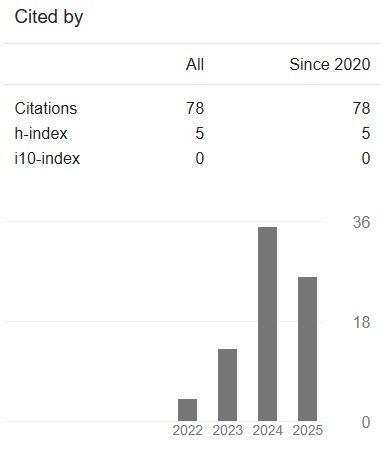Development and Simulation Via Flexsim for Kitting Trolley Design of Rear Car Seat Assembly Process
DOI:
https://doi.org/10.24191/jaeds.v3i2.70Keywords:
kitting, productivity, CAE, FlexsimAbstract
It was discovered that the material retrieval system used for a Sweden brand car seats assembly lines (RB40% and RM60%) in a local seat assembly company was not systematic in its arrangement of the assembly parts and only had a rack trolley that carried all the assembly parts in a poly-box. The workers had to waste time to pre kit the parts prior to assembly process thus could not meet production target. Although kitting trolleys implementation was generally known to help pre-kit earlier at logistic/warehouse department, the fabrication cost and long-term benefit would be affecting company decision to implement kitting trolley in the production line. The study aims to validate kitting trolley implementation efficiency prior to trolley actual fabrication by computer aided
simulation. Project started from feasibility study of existing kitting rack trolley in market to conceptual design to detailed design and simulation analysis. Detailed design of the kitting trolley was produced and from the design, time study showed that assembly process per carseat was reduced. Flexsim kitting trolley simulation predicted that the number of car seats produced per day is higher than production quantity target (24 seats per day) for RB40% but still below production target for RB60%. Nonetheless, both showed improvement of hence improving of quantities hence increase company’s productivity and eliminate waste of time.
Downloads
References
R. Hanson and L.Medbo,“Kitting and time efficiency in manual assembly,” International Journal of Research, vol 50, no 4, pp.1115–1125,2012,doi: 10.1080/00207543.2011.555786.
R. Hanson, “In-plant materials supply: Supporting the choice between Kitting and continuous supply,” thesis, Chalmers University of Technology, Göteborg, 2011
U.S. Kumar and Y.S. Narayan, “Productivity Improvement in a Windows Manufacturing Layout Using Flexsim Simulation Software,” Int. J. Res. Advent Technol., vol 3, no 9, pp. 86–90, 2015.
N.R. Rajhans, S. Gosavi, Sanjeevani and A. Nair “Implementation and evaluation of kitting system on assembly line: case study” 3rd National Conference on Recent Advances in Manufacturing (RAM – 2012), 2012.
S. Nikam, A. Joel, and J. Dutta, “Design and Implementation of Kitting Trolley for Just In Time Production in Textile Industry,” International Research Journal of Engineering and Technology, vol 5, no 4, pp. 4-7, Apr. 2018. https://www.irjet.net/archives/V5/i4/IRJET-V5I4290.pdf
P. Amalia and N. Cahyati, “Queue analysis of public healthcare system to reduce waiting time using flexsim 6.0,” International Journal of Industrial Optimization, vol. 1, no. 2, p. 101, Aug. 2020, doi: https://doi.org/10.12928/ijio.v1i2.2428.
V. E. de Oliveira Gomes and L. G. Trabasso, “A Proposal Simulation Method towards Continuous Improvement in Discrete Manufacturing,” Procedia CIRP, vol. 57, pp. 270–275, 2016, doi: https://doi.org/10.1016/j.procir.2016.11.047.
M. Kikolski, “Identification of production bottlenecks with the use of Plant Simulation software,” Eng. Mange. Prod. Serv, vol. 8, no. 4, pp. 103–112, Dec. 2016, doi: https://doi.org/10.1515/emj-2016-0038.
A. D. Wankhade and A.S Shahare “Productivity Improvement by Optimum Utilization of Plant Layout : A Case Study.” International Research Journal of Engineering and Technology, vol 4, no 6, pp. 1501–1505, 2017.
N. H. A. Halim, N. Yusuf, R. Jaafar, A. Jaffar, N. A. Kaseh, and N. N. Azira, “Effective Material Handling System for JIT Automotive Production Line,” Procedia Manufacturing, vol. 2, pp. 251–257, 2015, doi: https://doi.org/10.1016/j.promfg.2015.07.044.
A. Kambli, A. A. Sinha, and S. Srinivas, “Improving campus dining operations using capacity and queue management: A simulation-based case study,” Journal of Hospitality and Tourism Management, vol. 43, pp. 62–70, Jun. 2020, doi: https://doi.org/10.1016/j.jhtm.2020.02.008.
R. Muthuvel, M. Sharieff and M. Thenarasu, “Productivity Enhancement Through Introducing Lean Principles in Multi-Model Assembly Line”, International Journal of Engineering and Advanced Technology, vol 8, no 5, pp. 2476-2482, 2019.
M. Y. Mohd Yusoof, N. M. Z. Nik Mohamed, Nelfiyanti, and A. S. H. Md Yasir, “The Assessment of Man and Method Toward the Assembly Line Improvement in Automotive Manufacturing”, Journal of Modern Manufacturing Systems and Technology, 7(1), 7–14. https://doi.org/10.15282/jmmst.v7i1.9017.
I. Fowelin, “Overall worker efficiency Applied to Volvo Cars,” Msc dissertation, Dept. Of Technology Management and Economics, Chalmers University of Technology, 2017.
V. Jaffrey, N. M. Z. N. Mohamed, and A. N. M. Rose, “Improvement of productivity in low volume production industry layout by using witness simulation software,” IOP Conference Series: Materials Science and Engineering, vol. 257, p. 012030, Oct. 2017, doi: https://doi.org/10.1088/1757-899x/257/1/012030.
H. Mapfaira, M. Mutingi, V.P.D Kommula, D. Baiphisi, and M. Kemsley, “Productivity improvement using simulation modelling and lean tools,” International Journal of Engineering Sciences & Research Technology, vol 5, no 1, pp. 708-721, 2016.
S. S. Sh Ahmad, A. S. Abu Kasim, I. Masood, F. H. Ho, and H. Abdullah, “Capacity Study Of A Food Processing Company Using Arena Simulation Software”, Research Progress in Mechanical and Manufacturing Engineering, 2(1), pp.166–173, 2021.
Adient Sdn Bhd Process Book.
X. Zhu, R. Zhang, F. Chu, Z. He, and J. Li, “A Flexsim-based Optimization for the Operation Process of Cold-Chain Logistics Distribution Centre,” Journal of Applied Research and Technology, vol. 12, no. 2, pp. 270–278, Apr. 2014, doi: https://doi.org/10.1016/s1665-6423(14)72343-0.
E. Lavrov, Y. Chybiriak, O. Siryk, V. Logvinenko, and A. Zakharova, “Training of Specialists for Adaptive management. Techniques for Teaching Computer Analysis of Automated Production Systems in the FlexSim Environment.” Accessed: Sep. 18, 2023. [Online]. Available: https://ceur-ws.org/Vol-3104/paper184.pdf
Š. Václav, Š. Lecký, K. Senderská, and A. Mareš, “Simulation as a support tool in assembly systems planning,” MATEC Web of Conferences, vol. 137, p. 04008, 2017, doi: https://doi.org/10.1051/matecconf/201713704008.
P. Klinlek, N. Samattapapong, P. Klinlek, N. Samattapapong, and V. De Cadenet, “Modeling, Increasing Efficiency and Production Capacity in Melamine Dish Production Line.”, EasyChair Preprint, no. 4652, version 2, 2021.
Downloads
Published
How to Cite
Issue
Section
License
Copyright (c) 2023 Nursalbiah Nasir, Ahmad Fikri Sarimi, Helmi Rashid, Nurul Atikah Azis

This work is licensed under a Creative Commons Attribution 4.0 International License.









